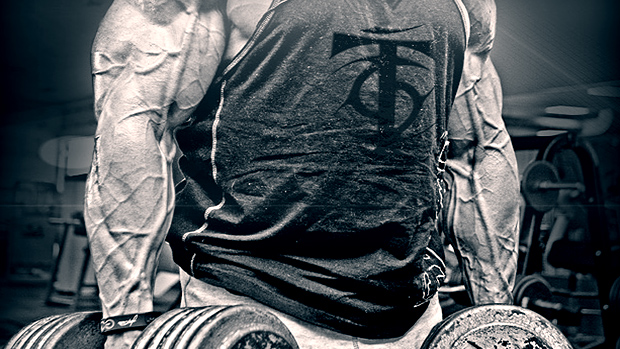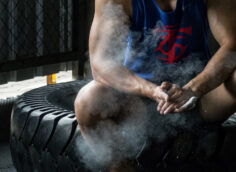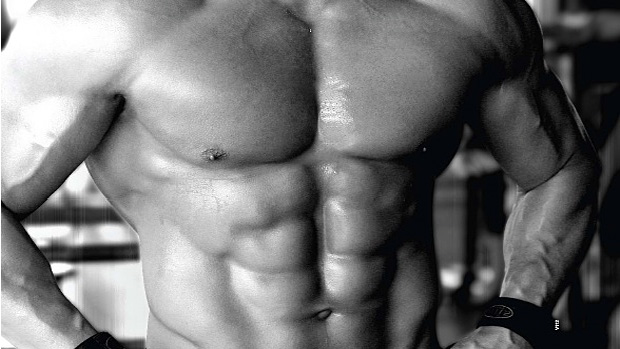What you already know: For best results, focus on compound exercises that provide the most bang for your buck, like squats, deadlifts, bench presses, and other big lifts.
What you may not know: There's still one exercise that most people don't do, yet it works almost every muscle group in the body and provides a ton of benefits – the loaded carry. Add it to your workouts and watch your progress skyrocket.
Pick up a weight of some sort and walk with it. There are many variations, but at their core, loaded carries are just walking with weights.
Don't let the simplicity fool you. As Coach Dan John says, the loaded carry does more to expand athletic qualities than anything else out there. Because of their versatility, loaded carries can be used by anyone, whether your goal is to get stronger, build muscle, or even lose fat.
And in terms of functionality, it doesn't get much more functional than this. Carries work almost every muscle in your body: shoulders and upper back, arms, core, and even your legs. By doing them you can improve your strength, stability, and conditioning all at once.
- Maintain a tall spine by keeping the head in a neutral position with the eyes forward, while pulling the shoulders back and down.
- Make sure your grip is centered on the handle.
- Squeeze the glutes, brace the abs, and keep your chest up.
- Take short but quick steps. Longer strides will cause the weight to swing back and forth.
The Farmer's Walk
The classic. Simply grab a pair of dumbbells or kettlebells and walk.
Suitcase Carry
This is where you're only holding a weight in one hand, like you're carrying a suitcase. Since the weight is offset, you have to work harder to maintain proper posture and position. This also works the core harder because it brings an anti-flexion aspect to the movement.
Waiter Walks
These can be done unilaterally or bilaterally. While you can't go as heavy with waiter walks, they're great for increasing shoulder stability and strength because of the additional scapular activation.
Rack Walks
These are done in a traditional rack position: hold the weight at chest level along the anterior delts and upper pecs. This position makes the exercise a bit more difficult as it forces the core to work harder to maintain an upright posture.
Barbell Walks
There are a number of barbell walks, including trap bar walks, rack walks, overhead walks, and Zercher walks. Each one places the weight in a different position, which changes the muscles worked. While these movements are not unlike ones done with kettlebells or dumbbells, the barbell allows you to add more weight to the movement, increasing the intensity.
Bottoms-Up Kettlebell Walks
Another good one for developing shoulder stability. Looks simple, but it's not. This variation forces the muscles of the rotator cuff to work extra hard to keep the shoulder and arm in a stable position.
First consider your main goal, then add loaded carries into your training accordingly.
Hypertrophy
When it comes to muscle growth, time under tension (TUT) is key. So your progression needs to focus on increasing your TUT from one workout to the next.
- Workout 1: Select a weight you can walk with for approximately 20-30 seconds. Do as many sets as you need to reach 3 minutes of work or time under tension.
- Workout 2: Use the same weight, but work up to 4 minutes of TUT.
- Workout 3: Use the same weight again, but work up to 5 minutes of TUT.
- Workout 4: Add 5 pounds and start back at 3 minutes of TUT.
Repeat until you're huge.
Strength
When strength is the goal, you either need to work on increasing the distance you can walk with a certain weight, the weight you can carry for a certain difference, or both.
- Workout 1: 90 pounds carried for 30 yards x 4 rounds.
- Workout 2: 90 pounds carried for 30 yards x 5 rounds.
- Workout 3: 100 pounds carried for 30 yards x 4 rounds.
- Workout 4: 100 pounds carried for 30 yards x 5 rounds.
The beauty here is there's really no wrong way to do it. You can play with the distance, the weight, the number of rounds, or all three. As long as you're increasing one while keeping the rest the same each workout, you're golden.
Fat Loss and Conditioning
The same protocol for hypertrophy and strength can be used for fat loss and conditioning too, as long as you're continually progressing in either TUT or weight. But you can also have some fun and incorporate them into a circuit with other exercises.
Example: Grab a pair of dumbbells or kettlebells and do the following circuit without setting the implements down. Choose a weight that's challenging, yet allows you to hold the implements for the entire duration of the circuit. Rest 1-2 minutes between circuits. Complete 2-3 times.
| Exercise | Sets | Reps | |
|---|---|---|---|
| A1 | Farmer's Walk | 2-3 | 30 sec. |
| A2 | Dumbbell Push Press | 2-3 | 10 |
| A3 | Farmer's Walk | 2-3 | 30 sec. |
| A4 | Bent-Over Two Dumbbell Row | 2-3 | 10 |
| A5 | Farmer's Walk | 2-3 | 30 sec. |
| A6 | Dumbbell Reverse Lunge | 2-3 | 10 |
Upper Back Hypertrophy
Carries are great for packing on slabs of muscle to the upper back. These muscles are largely made up of slow-twitch fibers, which means they grow best with a lot of time under tension. Loaded carries are perfect for this because the exercise naturally creates a lot of TUT. Generally you do them for longer periods of time compared to other exercises and the tension stays constant since you're not lifting or lowering within ranges of motion that experience more or less tension.
Shoulder Health
Carries improve shoulder health through increased strength and stability. As more and more desk jockeys are turning into the hunchback of Notre Dame, shoulder health is becoming increasingly important for improving posture and reducing pain.
Proper execution of the exercise forces the shoulder blades to sit down and back. This position allows for more activation of the shoulder blade muscles, of course allowing for increases in strength. Similarly, overhead carries will also improve shoulder health. While the loads used will be lighter, this overhead position requires greater stability of the scapula, while also increasing core activation.
Core Strength
According to Dr. Stuart McGill, loaded carries train the muscles of the core (abdominal wall, external obliques, and quadratus lumborum) to create stability through the midsection. Creating tension in these muscles is necessary to maintain an upright posture.
When done unilaterally (one-handed) you add in the anti-rotation and flexion aspect. The muscles of the trunk must work against the weight to prevent the core from rotating and flexing to that side. A strong core is the foundation for creating tension and producing power. Strengthening these muscles will help you increase your numbers in all the big lifts.
Crushing Grip Strength
Few exercises are better for developing grip strength than loaded carries because of the amount of time spent with the weight in your hands. Training your grip has a direct carryover to the rest of your training. When it comes to exercises like deadlifts and rows, grip strength is often the limiting factor. Strengthening your grip is going to allow you to lift more weight.
Conditioning
Loaded carries can improve your conditioning too. Try them as finishers at the end of a workout or superset them with another exercise for heart pounding goodness. Since they rely on the entire body, they're perfect conditioning tools. Crank up the intensity with heavy loads and they'll create the perfect metabolic environment for improving conditioning.
Bottom line: You can use loaded carries in any program for any goal without a lot of fancy equipment. So pick 'em up and get going.





